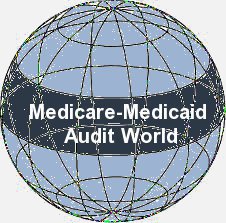 One of the best “investments” available today is the current 10.5% rate of interest paid by CMS on money improperly held by its contractors. The rules on when CMS will pay interest and how appeals affect interest paid on amounts recouped are set forth in 42 C.F.R. § 405.378 and 42 C.F.R § 450.379.
One of the best “investments” available today is the current 10.5% rate of interest paid by CMS on money improperly held by its contractors. The rules on when CMS will pay interest and how appeals affect interest paid on amounts recouped are set forth in 42 C.F.R. § 405.378 and 42 C.F.R § 450.379.
 Medicare pays and charges interest from the date of a “final determination,” which is defined in §405.378(c) and generally is the date of the written advice of payment or demand for repayment. Interest starts to accrue 30 days after the notice date and is calculated in 30 day increments thereafter. This means if CMS pays or is repaid the full amount due within 30 days, there will be no interest. If CMS pays or is repaid on the 45th day, the interest due is that calculated as of the 30th day, not the 45th day.
Medicare pays and charges interest from the date of a “final determination,” which is defined in §405.378(c) and generally is the date of the written advice of payment or demand for repayment. Interest starts to accrue 30 days after the notice date and is calculated in 30 day increments thereafter. This means if CMS pays or is repaid the full amount due within 30 days, there will be no interest. If CMS pays or is repaid on the 45th day, the interest due is that calculated as of the 30th day, not the 45th day.
The interest rate applied to the amount due is the higher of the rate fixed by the Secretary of the Treasury after taking into consideration private consumer rates of interest prevailing on the date of final determination or the current value of funds rate. This means that if, for example, the ALJ overturns a repayment demand that has been previously recouped or repaid, the interest rate applied to the amount repaid by CMS is the interest rate in effect on the date of the ALJ’s decision, not the rate in effect on the date of the initial repayment demand. A list of the interest rates paid by CMS since February 2001 is here so you can verify that the MAC is using the correct rate in calculating the interest due.
Section 405.378(g) provides that in the event of partial payments made over time, the amount paid is first applied to the outstanding interest and then to the principal, the same method used by credit card companies when the bill is not paid in full.
How do Requests for Redetermination by a MAC and Reconsideration by a QIC Affect the Interest Paid?
Pursuant to 42 C.F.R. § 405.942(a), a provider may seek a redetermination of an initial  repayment demand “[w]ithin 120 calendar days from the date a party receives the notice of the initial determination.” However, if the amount claimed to be due has not been promptly repaid in full, § 405.379(d) permits a Medicare contractor to begin recouping the amount due from other amounts CMS owes the provider 41 days after the date of the initial repayment demand. Recoupment can be prevented or stopped, however, by a provider request for redetermination. If the provider is unsuccessful, 42 C.F.R. § 405.962(a) provides that a request for reconsideration to a QIC may “[b]e filed within 180 calendar days from the date the party receives the notice of the redetermination.” If the request for reconsideration is filed within 60 days of the adverse redetermination notice, recoupment continues to be stayed pursuant to §455.379(e)(ii). If no request for reconsideration is filed within 60 days, recoupment may be resumed, but will be stopped again by filing a reconsideration request at any time during the 180 day period. Recoupment will resume if the decision of the QIC is unfavorable.
repayment demand “[w]ithin 120 calendar days from the date a party receives the notice of the initial determination.” However, if the amount claimed to be due has not been promptly repaid in full, § 405.379(d) permits a Medicare contractor to begin recouping the amount due from other amounts CMS owes the provider 41 days after the date of the initial repayment demand. Recoupment can be prevented or stopped, however, by a provider request for redetermination. If the provider is unsuccessful, 42 C.F.R. § 405.962(a) provides that a request for reconsideration to a QIC may “[b]e filed within 180 calendar days from the date the party receives the notice of the redetermination.” If the request for reconsideration is filed within 60 days of the adverse redetermination notice, recoupment continues to be stayed pursuant to §455.379(e)(ii). If no request for reconsideration is filed within 60 days, recoupment may be resumed, but will be stopped again by filing a reconsideration request at any time during the 180 day period. Recoupment will resume if the decision of the QIC is unfavorable.
If the provider is successful at either the 1st or 2nd level appeal, it is entitled to interest on any money held by the Medicare contractor for more than 30 days, whether received by payment from the provider or by way of recoupment. However, §405.378(j) imposes an interest penalty on providers who do not immediately pay the amount demanded in full and are not successful until appealing to an ALJ or the Medicare Appeals Council.
 Medicare-Medicaid Audit World
Medicare-Medicaid Audit World













 conduct a project to demonstrate the use of recovery audit contractors in identifying underpayments and overpayments under Parts A and B of Medicare and to recoup overpayments. Congress further provided that payment may be made to the RACs on a contingent basis from amounts they recovered. In § 302 of the Tax Relief and Healthcare Act of 2006,
conduct a project to demonstrate the use of recovery audit contractors in identifying underpayments and overpayments under Parts A and B of Medicare and to recoup overpayments. Congress further provided that payment may be made to the RACs on a contingent basis from amounts they recovered. In § 302 of the Tax Relief and Healthcare Act of 2006, 





